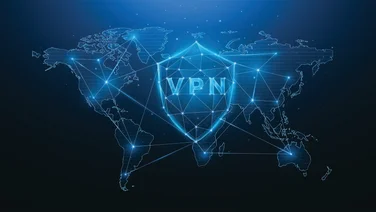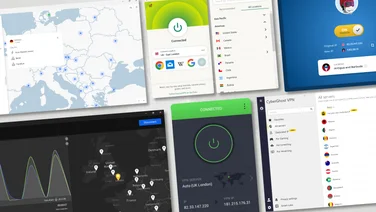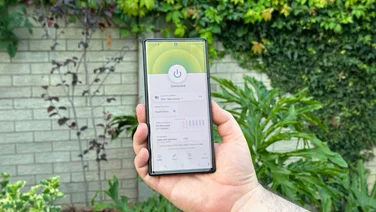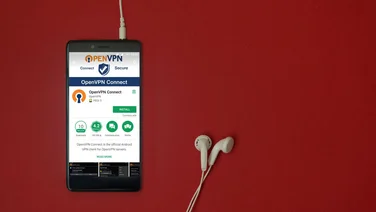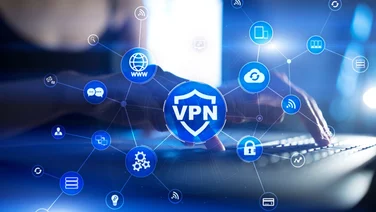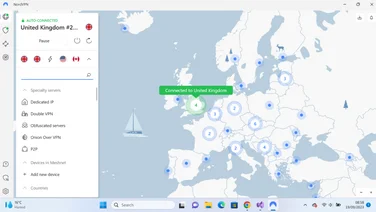To help us provide you with free impartial advice, we may earn a commission if you buy through links on our site. Learn more
- Private Internet Access (PIA) VPN review: How much does it cost?
- Private Internet Access (PIA) VPN review: What’s it like to use?
- Private Internet Access (PIA) VPN review: How fast is it?
- Private Internet Access (PIA) VPN review: Is it good for video streaming?
- Private Internet Access (PIA) VPN review: Is it secure?
- Private Internet Access (PIA) VPN review: Should you buy it?














- Excellent range of security features
- Easy-to-use “streaming optimised” servers
- Great value on a long-term contract
- US jurisdiction could compromise your privacy
- Performance lags behind the fastest VPNs
PIA is a VPN service that can keep all your online activity private, so that not even your own ISP can monitor the sites you’re visiting and files you’re downloading. Like all VPNs, it works by encrypting your internet traffic and routing it through one of the company’s secure servers.
These servers are spread out across 84 countries, which means you can also use the VPN to “spoof” your apparent location. By picking a server in the USA, for example, you can access video-streaming sites and other services that are normally blocked in the UK. You can also use your virtual presence to share and download files over BitTorrent, even if it isn’t legal in your home country – although PIA doesn’t explicitly support file sharing.
Private Internet Access (PIA) VPN review: How much does it cost?
A single month of PIA’s VPN service costs £10 – about the same as most rival VPNs. However, it becomes much better value if you’re willing to sign up for a longer term. A year’s subscription costs just £32, equivalent to £2.71/mth, and there are regular special deals, too: at the time of writing, you can sign up for a full three years, plus three months free, for £65. That works out to just £1.67/mth – one of the lowest prices around. If you’re serious about protecting your anonymity, you can choose to pay with a gift card or cryptocurrency, so you never have to share your bank details with PIA.Your subscription lets you use the VPN on up to 10 devices simultaneously, which is more flexible than most services (although Atlas VPN, IPVanish and Surfshark permit unlimited devices). All the popular desktop and mobile platforms are supported, and PIA receives bonus marks for offering a proper graphical client for Linux systems – most VPNs only provide command-line tools. You can also install the VPN on a compatible router to protect all traffic from any number of connected devices, while a smart DNS service can be used to conceal your location when using a games console, smart TV or set-top box.
If you have any trouble setting up and using the service, the company claims its online support service is available 24/7; however, when we tried to get in touch, the live chat feature was offline and we had to fill in a web form and wait several hours for a response.
Those who remain unsatisfied for any reason can exercise a 30-day money-back guarantee. It’s also possible to try PIA for seven days before you buy, which is very unusual for a VPN service – although the trial only covers Android and iOS devices.
READ NEXT: Best VPN
Private Internet Access (PIA) VPN review: What’s it like to use?
We had no problem downloading the PIA client app from the provider’s website and setting it up on Windows 11. Once installed it lurks in your system tray, popping up a small rectangular window when clicked. A big round button lets you connect and disconnect the VPN, and you’ll also see details of the server to which you’re connected.
Clicking the fly-out arrow brings up a scrolling list of available servers. You can type to search for a location, or sort the list by name or latency – the latter providing a handy clue as to how speedy that particular server is likely to be.














You can also expand the interface into a full-height strip, with quick-connect buttons for your favourite servers, a performance graph, plus easy access to options such as desktop notifications, port forwarding and so forth. It may look complicated, but you can close or reorder the different modules – and you probably won’t need to use them every day anyway. In fact, you can configure the VPN to connect automatically on launch or system startup, and never have to interact with the software at all.
The Android app is laid out in much the same way, with a main screen that scrolls up and down to reveal various controls and information. Once again, you can customise the order and visibility of the different panels, and configure automatic connection to keep you protected without having to open the app.
Private Internet Access (PIA) VPN review: How fast is it?
All VPNs slow down your connection to some extent. To see how PIA’s performance stacks up, we tested the service on our Windows 11 laptop, using a Virgin Media fibre internet connection. Before activating the VPN, we measured a download speed of 381Mbits/sec using Google’s Speed Test tool; after we had connected to a London-based PIA server, this fell quite sharply to 119Mbits/sec.
That’s a significant drop: rival VPNs including HMA, IPVanish and NordVPN achieved download speeds of more than 300Mbits/sec in the same test. If you feel the need for more speed, PIA’s handy latency indicator makes it easy to hunt down a more responsive server. In our case, it led us to switch to the Southampton server, which increased our speeds to a more persuasive 215Mbits/sec.














When we tried a longer-range connection, we found the New York server delivered almost identical performance to the London server, averaging 121Mbits/sec downstream. Again, that’s a long way short of the best performers – NordVPN achieved 313Mbits/sec.
We then tried the same tests on a Samsung Galaxy Tab S7 tablet running Android 13. Performance via the London server was surprisingly better than it had been on Windows, with an impressive download speed of 287Mbits/sec. However, the New York server didn’t register any meaningful difference at all, with the Google Speed Test reporting a download rate of 126Mbits/sec.














While PIA won’t win any prizes for performance, there’s ample bandwidth here for typical VPN tasks such as private web browsing and video streaming. What’s more, both the desktop and mobile apps support split tunnelling, so you can send specific apps through the VPN while the rest go through your ISP’s servers at full speed. Another clever feature is that you can tap or click a handy button to temporarily snooze the VPN and use the full bandwidth of your broadband connection for a set period, after which PIA will automatically re-engage.
READ NEXT: Best VPNs for gaming
Private Internet Access (PIA) VPN review: Is it good for video streaming?
Top-quality 4K video requires a sustained download speed of at least 25Mbits/sec. PIA easily exceeds that: it should even be able to serve up multiple 4K videos at once on different devices. And to help you get connected, the list of servers includes dedicated “streaming optimised” servers in the UK and US, plus Australia, Denmark, Finland, Italy, Japan and Sweden.
We were happy to find that connecting to the US streaming server enabled us to access the most popular streaming services without a hitch. We were freely able to browse and watch US-only content on Netflix, Disney+ and Hulu, both in a browser on our Windows laptop, and via the services’ own Android apps on our tablet.














Sadly, things didn’t go quite so smoothly with PIA’s UK-based streaming server. We were able to watch BBC iPlayer and ITVX on both the laptop and the tablet, but Channel 4 only worked in the browser – and Now TV refused to play ball on either platform, throwing up a peremptory “access denied” error. That all means that PIA might not be an ideal VPN for holidaymakers wanting to keep up with their favourite UK shows while abroad.
READ NEXT: Best VPNs for Amazon TV Fire Stick
Private Internet Access (PIA) VPN review: Is it secure?
PIA promises that it doesn’t keep any logs of your online activity, and the app is designed with an eye on security. On both Windows and Android, you can create quite sophisticated rules to turn the VPN on or off for particular wireless or mobile networks; in the desktop client, you can also nominate certain IP addresses that should always be accessed through the VPN, which is a great feature that’s found in few other VPNs.
On the desktop, a multihop routing option can also make it more difficult for anyone to track your location, and all PIA apps offer a kill switch that shuts down internet activity when the VPN disconnects, to ensure that nothing is inadvertently exposed.














There’s just one thing that makes us hesitant about PIA: it’s based in the USA, which is part of the “Five Eyes” intelligence alliance. This means that whatever information PIA has about you could theoretically be obtained by US agencies and shared with British authorities. For peace of mind you might prefer a VPN that’s based in a more neutral location, such as NordVPN in Panama or ExpressVPN in the British Virgin Islands.
Private Internet Access (PIA) VPN review: Should you buy it?
PIA might not be the ideal fit for everyone. Performance is fine rather than great, and we found streaming support wasn’t perfect. The fact that the company falls under US jurisdiction also means it shouldn’t be your first choice if anonymity is a priority for you.
However, if you’re simply looking for everyday privacy and no-fuss location-spoofing, PIA is a good choice. The 10-device allowance is appealingly flexible, it has several stand-out features (including a user-friendly front-end for Linux users), and if you’re willing to sign up for a long-term contract then it’s one of the cheapest VPNs around.

